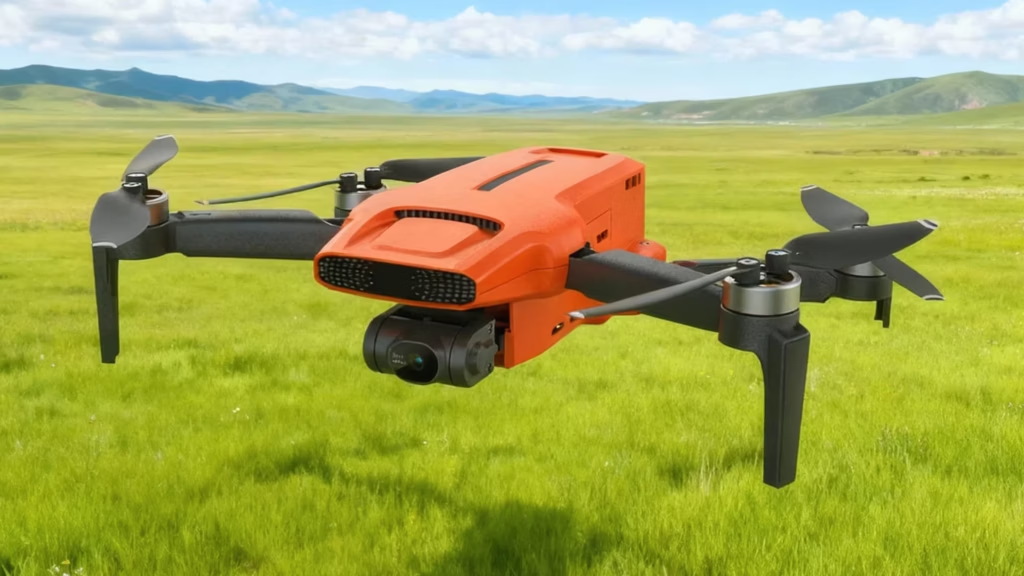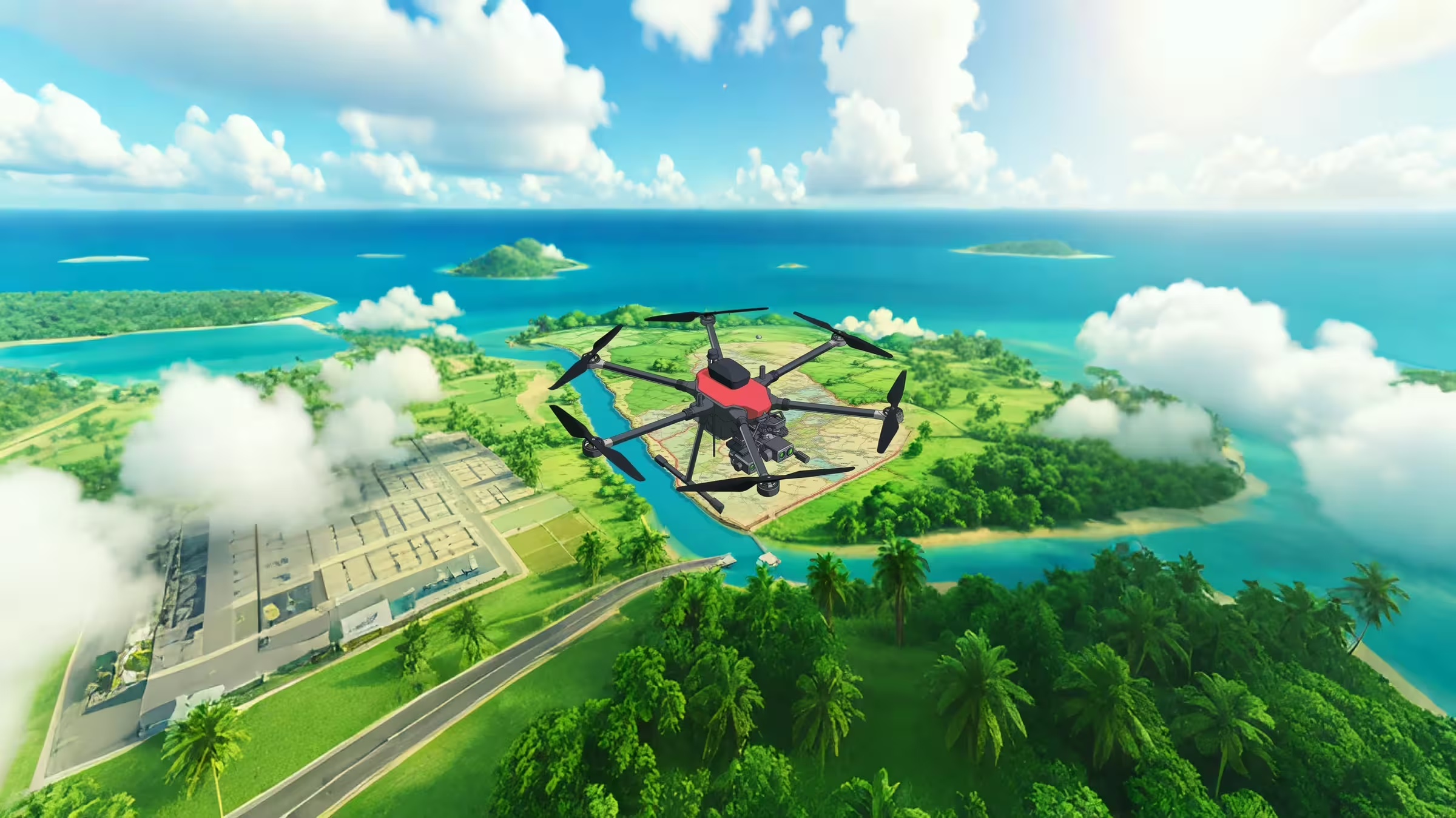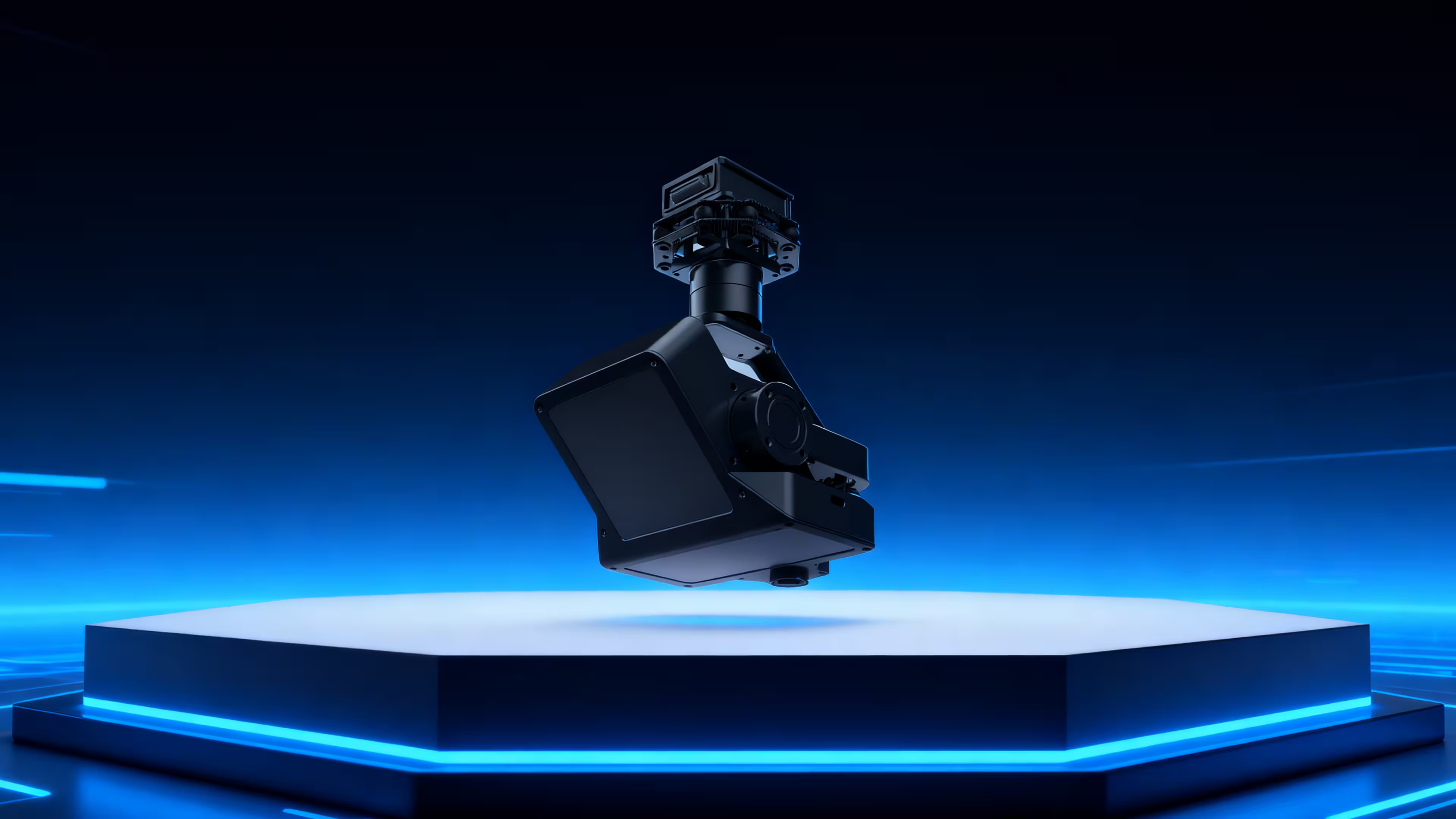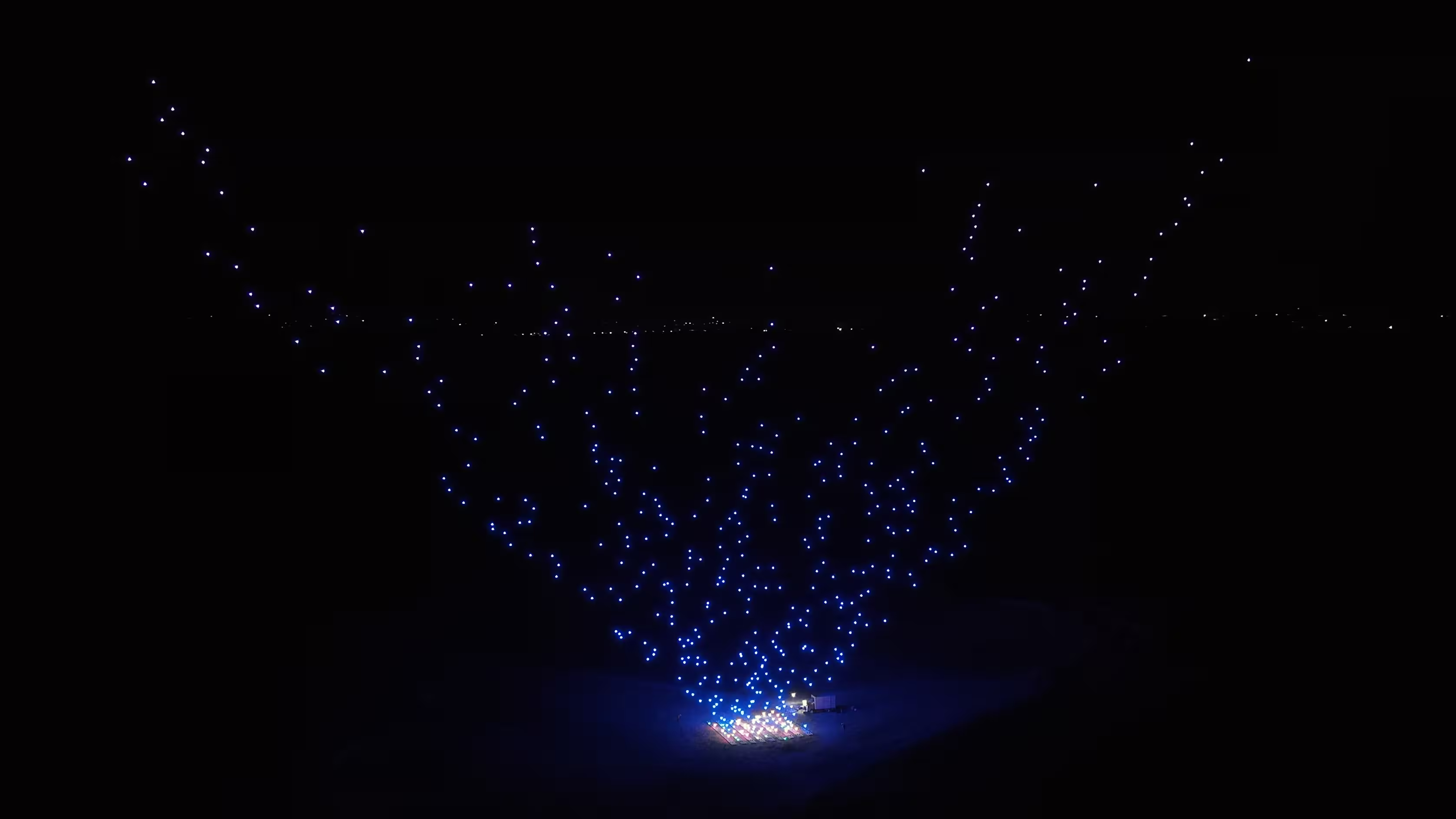In the future, people won’t remember the moment drones became part of ordinary life. They’ll talk about it the way they talk about the rise of smartphones or the silent spread of fiber networks—gradual, unstoppable, woven into the texture of human behavior before anyone bothered to mark a date.
The future never arrives with a parade.
It slips quietly into your pocket.
The MMC Mini 3, weighing just ~245 grams, is one of those machines that looks deceptively simple—like something that must have always existed in some form. A folded rectangle of engineering, a hinge of precision, a piece of hardware light enough to forget but powerful enough to redefine what personal imaging means. A device that tells you, in its own quiet way: This is how the future becomes portable.
It doesn’t shout.
It doesn’t have to.
The world changes when the tools of high-end aerial imaging shrink into something you can carry into a café, slip into a jacket pocket, deploy on a mountain ridge, or lift into the smoky neon haze of a city just after rain. The Mini 3 isn’t merely another consumer UAV—it is a personal satellite, an airborne extension of perception, a pocket-sized cinematography machine engineered for a world that moves faster than stories can be written about it.
And like all technologies that quietly disrupt the order of things, it is defined not only by its features, but by the real-world lives that shape themselves around those features.

1. Weightless Power: A Machine That Disappears Into Your Life
The first thing you notice about the Mini 3 is how little there is to notice.
Folded, it measures 145 × 85 × 56 mm, about the size of a stacked smartphone set. It weighs less than 250 grams, the invisible threshold that governs global aviation regulation.
Below that line, a drone becomes something else—
a device of freedom.
In the United States, no FAA registration. No license. No bureaucracy tugging at the edge of creativity with invisible threads. Just take it out, unfold it, fly.
This regulatory invisibility creates a new category of user: not a pilot, not a filmmaker, not an engineer—just a person with a story to tell. Someone who sees something beautiful, or strange, or worth remembering—and has the means to capture it instantly, without friction.
Here, lightweight isn’t a spec.
It’s a philosophy.
The engineers chose aluminum, composite plastics, micro-gimbals, feathered battery housing—not to impress spec sheets, but to build a drone so unobtrusive that it becomes an extension of your instincts. You don't think about whether to bring it. You simply have it with you, always.
A drone you plan for is a tool.
A drone you forget you're carrying is a companion.
2. Vision Beyond Human Eyes: A Camera Born for Motion and Night
The Mini 3 carries a 1/2-inch CMOS sensor, but numbers don’t explain what that means. It's like saying a novelist uses ink—true, but insufficient.
In reality, it means this drone sees the world with 48 million pixels, each engineered to extract information from light the way a cybernetic retina might—precise, unflinching, hungry.
The camera shoots 4K/60fps video, a frame rate that feels less like video and more like memory. Fast enough to catch the subtle roll of waves against a pier. The sudden lift of a skateboarding trick. The wind-tossed hair of a traveler leaning out from a skyscraper rooftop. Smooth motion that feels like you’re standing inside the moment, not reviewing it.
But it’s at night that the Mini 3 becomes something else entirely.
AI Super Night Mode
Low light is where most compact drones falter—noise creeps in, details vanish, colors desaturate. But the Mini 3’s AI-driven night algorithm does something uncanny. It constructs clarity out of absence. It restores detail from the edge of darkness. It turns alleyways into neon-soaked corridors, rooftops into stage sets, and distant city lights into crisp geometric constellations.
This is where the world feels closest to Gibson’s stories—
where light becomes a language
and shadow becomes architecture.
With the Mini 3, night is not a limitation.
It is an aesthetic.
3. SoLink: A Digital Thread Stretching 9 Kilometers Into the Distance
In cyberpunk tales, information travels like electricity—fast, clean, relentless. The Mini 3 channels this idea through SoLink, an upgraded dual-band digital video transmission system capable of reaching 9 kilometers under ideal conditions.
Think of SoLink not as a communication module, but as an invisible corridor carved into the air.
A private channel.
A secure digital artery.
The link is so stable, so low-latency (as little as 120 ms), that the pilot doesn’t feel like they’re watching a video feed—they feel like their eyes are somewhere else. Somewhere distant, gliding above forests, or oceans, or crowded intersections.
The controller itself weighs 260 grams, balanced, minimalistic, with support for both USB-C and Lightning, meaning it’s ready for whatever device you carry. Its battery can endure 8 hours of operation—longer than most creators’ stamina.
Technology, in this sense, becomes invisible.
The connection feels telepathic.
4. Stability in a Chaotic World: Wind, Altitude, Precision
Weather is the enemy of small drones. Wind pushes, drags, bullies. Most lightweight machines tremble under pressure.
But not this one.
The Mini 3 stands firm against winds up to 10.7 m/s.
Strong breezes.
Coastal gusts.
Urban wind tunnels whipping between glass towers.
This resistance doesn’t come from brute force—it comes from:
- highly efficient propeller geometry
- firmware-level stabilization algorithms
- rapid-response motor RPM modulation
- predictive drift correction
- a three-axis mechanical gimbal with microscopic ±0.005° precision control
In practice, it means your footage looks smooth, unnervingly smooth, even when the world is trying to shake the machine apart. It feels as though the camera floats within a bubble of stillness, untouched by physics.
And the drone climbs gracefully up to 4000 meters of altitude—where air thins, where cold bites, where clouds drift like wandering data clusters. Travel vloggers discover new perspectives. Climbers document summits. Explorers capture worlds few have seen.
Hover stability is razor sharp:
down to ±0.1 m vertically and ±0.3 m horizontally, thanks to a multi-constellation positioning system including Beidou, GPS, GLONASS, and Galileo.
Precision becomes poetry.
5. Flight That Feels Alive: The Power of Intelligent Modes
Machines may be tools, but intelligent drones behave like collaborators.
With the Mini 3’s suite of smart flight modes, the drone doesn’t just follow commands—it anticipates intentions. It frames shots. It tracks subjects. It maneuvers like a trained cinematography assistant.
These intelligent modes include—but transcend—the usual industry terms:
- automated tracking
- orbiting
- waypoint filming
- rocket-style ascents
- cinematic reveals
- AI-defined composition assistance
In practice, these aren’t features.
They’re behaviors.
You point.
The drone interprets.
You imagine.
The drone executes.
The pilot’s skill ceiling rises. Newcomers feel like professionals. Professionals feel like visionaries.
6. Time Rewritten: 8K Hyperlapse
Most people think time can’t be bent.
They haven’t seen 8K hyperlapse from a 245-gram drone.
This feature turns hours into seconds, drawing long scarlet threads of taillights across highways, stretching cloud shadows over mountains, spinning city intersections into luminous mandalas. The Mini 3 suspends the camera in impossible steadiness, stitching together images with mechanical calm while the world races past it.
It is time travel performed by a machine that fits into your pocket.
7. Battery Modularization: Power That Keeps Pace With Ambition
A drone is only as free as its battery allows it to be.
The Mini 3’s 2200 mAh intelligent Li-ion 2S battery weighs just ~85 grams but carries enough energy to keep the drone airborne for up to 32 minutes—longer than most urban dawn light cycles, perfect for capturing transitions between night and day.
USB-C fast charging means you can power up anywhere:
- in a car
- from a power bank
- from a laptop
- from a wall charger
Creators roam farther. Explorers stay longer. Casual users fly more spontaneously. The constraint of limited power fades into the background.
The battery, like the drone, learns to become invisible.
8. The Human Side of the Machine: Real-world Scenarios
This drone exists not as a spec list, but as a catalyst for real moments.
A traveler
— standing on a cliff in Iceland, unfolding the Mini 3 with cold fingers. The wind howls. The drone rises, steady as an AI eye, capturing waterfalls the traveler can barely approach on foot.
An architect
— mapping a construction site at dawn, using SoLink’s 9 km transmission to study roof layouts from safe distances.
A filmmaker
— catching 4K/60fps slow motion of a chase through neon-lit streets, the gimbal slicing smooth arcs over crowds.
A wildlife observer
— floating silently above marshlands, recording from 24 mm equivalent perspective without disturbing the ecosystem.
A city dreamer
— launching the Mini 3 from a rooftop garden to capture the skyline’s shift from dusk to night, AI Super Night Mode decoding every tone of the urban glow.
A beginner
— owning their first drone without licenses, tests, or bureaucracy, discovering the joy of flight without complication.
The Mini 3 dissolves barriers between desire and execution.
9. A Philosophy of Minimalism and Capability
In the cyberpunk future, the most powerful machines are not the largest—but the smallest. Devices that hide complexity within simplicity. The Mini 3 is a manifestation of this ethos.
It is a machine engineered with restraint. Everything unnecessary removed. Everything essential refined.
- Light, but not fragile.
- Powerful, but not intimidating.
- Intelligent, but not overwhelming.
- High-tech, yet intensely human in purpose.
You don’t learn this drone.
You use it, and it learns you.
10. A Pocket Drone for a Hyperconnected Era
The world is accelerating—
more travelers, more creators, more explorers, more digital storytellers. The Mini 3 exists for them: a democratized gateway to cinematic aerial imaging.
It is not just a product.
It is a movement toward accessible sky cinema.
A movement toward personal aerial freedom.
A movement toward future storytelling.
11. The Sky Is No Longer a Limit
The MMC Mini 3 is a machine built for people who see the world as something worth capturing—
not later, not with complex equipment,
but now.
Right now.
Wherever they are.
Every feature, from the 9 km SoLink transmission to the 48MP camera,
from the 10.7 m/s wind resistance to the 32-minute flight endurance,
from the AI night algorithms to the 8K hyperlapse,
has a single purpose:
To turn the sky into a canvas that anyone can access.
This is how the future arrives—
not with noise, but with clarity.
Not with weight, but with lightness.
Not with prediction, but with possibility.
And it fits in your pocket.




